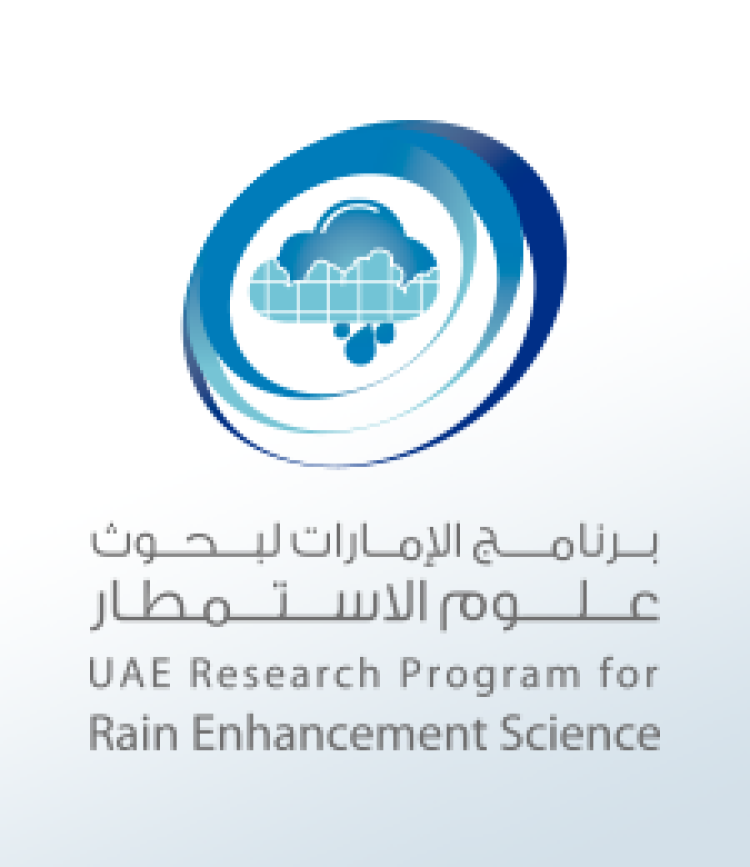UAEREP
UAS for Rain Enhancement
Background:
This project will establish a prototype UAS platform for rainfall enhancement activities as well as technology that optimizes traditional seeding operations. The in-situ data will overcome the unpredictability of environmental parameters needed to identify conditions suitable for seeding and to adequately test the implementation of autonomous targeted observations and seeding. Further, improved technology and automation of cloud seeding operations while lowering the operational footprint will help optimize the effectiveness and efficiency of cloud seeding programs. The UAS’ impact on future rainfall enhancement operations in arid and semi-arid regions of the world, would especially be realized in countries with limited infrastructure. This lightweight sensor package and algorithms can also be used on piloted seeding aircraft to improve targeting. Finally, our study dedicates a task for capacity building and knowledge transfer to ensure its value is added to weather modification operations in the UAE.
Approach and Methods
Figure 1: Cloud droplet (FSSP) and aerosol (PCASP) number distributions in (300 m above cloudbase) and just below cloud base on 4 September 2002 over the Habshan oil field in the UAE. Cloud base altitude was 3200 meters MSL with a temperature of 13 C [17].
Autonomous targeted observation and delivery consists of two main processes: i.) determining online from radar and in-situ data the best locations in the atmosphere for seeding; and ii.) calculating optimal aircraft paths to reach these locations and deliver the seeding agent. The overall approach taken here uses radar data to identify a target cloud for seeding. Once the unmanned aircraft is by the target cloud, the UA should then switch to in-situ sensing and find the area of maximum threshold condition, start seeding at the latter location, then find the position of the minimum threshold condition where seeding stops.
Aircraft planning and control will leverage the Energy-aware, Airborne, Dynamic Data-Driven Application System (EADDDAS) framework developed by PI Frew for autonomous persistent sampling of complex atmospheric phenomena using dispersed computing and data-driven reasoning. The figure below shows an instantiation of the framework during experiments conducting wind energy harvesting in late June 2015 in Lubbock, TX. A similar instantiation was used in Spring 2018 to study tornado formation in supercell thunderstorms. For the proposed version, the UAE weather radar replace the Ka-band radar and the LROSE algorithm will replace the Dual-Doppler Synthesis and Atmospheric Models for Online Planning (AMOP) to identify candidate clouds conducive to seeding. The planning and control algorithms will be the same.
Figure 2, 3, and 4: The hardware and software elements of the Energy-aware Airborne Dynamic Data-Drive Application System for persistent surveillance and sampling.
A sensor suite is needed to provide the required atmospheric measurements for targeting, while also being compact enough to fit into a small unmanned aircraft. Based on prior assessment of sensor technology [16] the payload will consist of an instrument suite that measures: 3D wind velocity such as the Rain Dynamics multi-angle inertial probe (MIP), drop size distributions such as the Droplet Measurement Technologies (DMT) cloud droplet probe (CDP), and aerosol size distribution such as the Handix Scientific printed optical particle spectrometer (POPS).
Two unmanned aircraft will be developed for this project: the first will carry the full sensor suite while the second will carry a reduced sensor package in order to carry the seeding agents. The University of Colorado - Boulder will leverage its decades of UAS expertise to design and create a high-performance, reliable small (less than 25 kg) fixed wing UAS.
Figure 5: Modeling the UAS and its design to integrate the sensor suite.
The targeted observation and seeding system that has been developed during the proposed effort will be evaluated through two field campaigns: a two week campaign in Boulder, Colorado, USA to verify system integration and a 6 week intensive field campaign in the UAE. This will provide the opportunity to assess the performance of the system in an operational environment before the second field campaign in the UAE. The subsystems developed for this project will be verified by field experiments using augmented versions of existing hardware resources and following standard software development life cycle development and programming practices
Figure 5: Schematic for the autonomous UAS system, subsystem and components
The United Nations estimates that by the year 2025, 1.8 billion people will be living in countries or regions with absolute water scarcity, and two-thirds of the world's population could be living under water stressed conditions. In addition, much of the projected total global population increase of three billion over the next three decades will occur in developing countries, putting severe pressure on already limited supplies of potable water. There are many challenges faced by arid regions, such as: lack of natural water resources; limited renewable water resources; low rain fall; high population growth (high demand); exponential industrial growth; urbanization (new cities thus increase in demand); high temperatures; and the need to utilize ground water for agriculture. The main challenge facing arid regions is water scarcity caused by a low amount of rainfall and high rate of evaporation accompanied with heavy groundwater usage. Rain enhancement, a part of those activities more popularly known as ‘cloud seeding’, could offer a viable, cost-effective supplement to existing water supplies in arid and semi-arid regions. The technique offers sufficient potential for regional governments to develop a new tool in their quest to ensure water security.
Acknowledgement: This material is based on work supported by the National Center of Meteorology, Abu Dhabi, UAE under the UAEResearch Program for Rain Enhancement Science.
Disclaimer: Any opinions, findings and conclusions or recommendations expressed in this material are those of the author(s) and do not necessarily reflect the views of the National Center of Meteorology, Abu Dhabi, UAE, funder of the research.
Collaborators
[video:https://youtu.be/59cKF6eCgsk?t=1]



